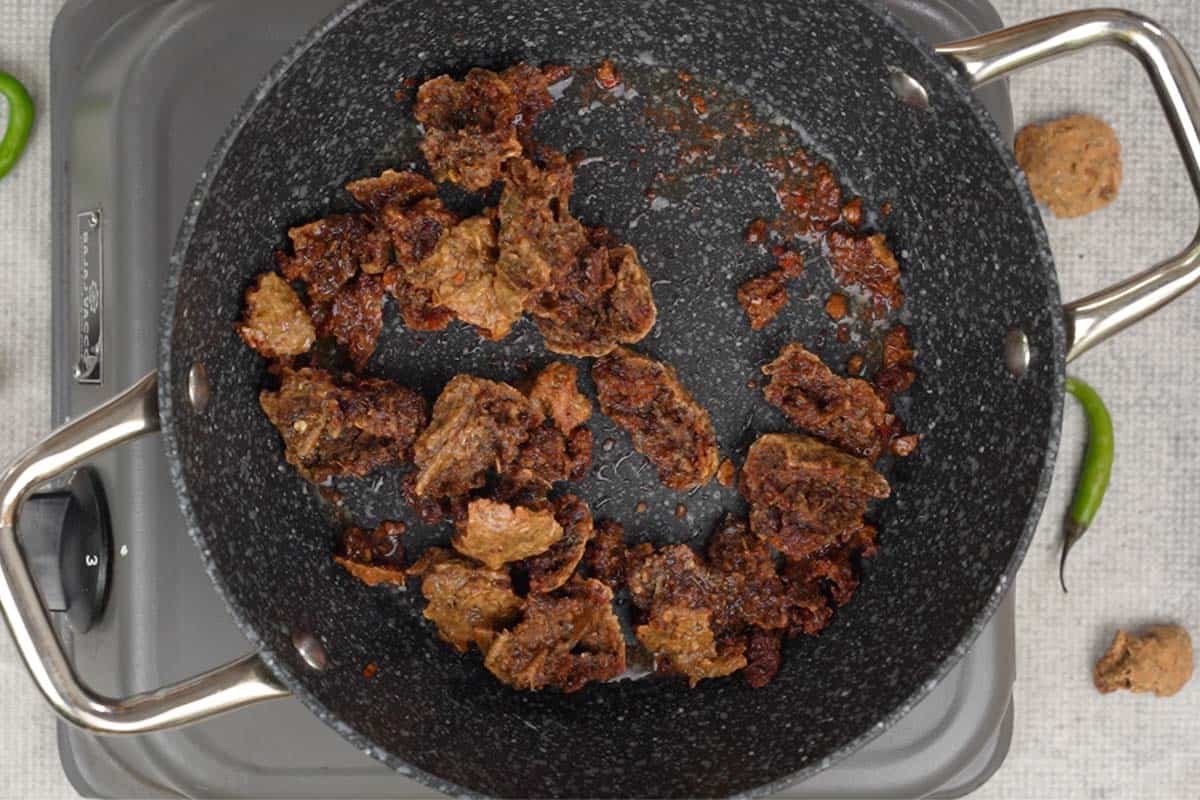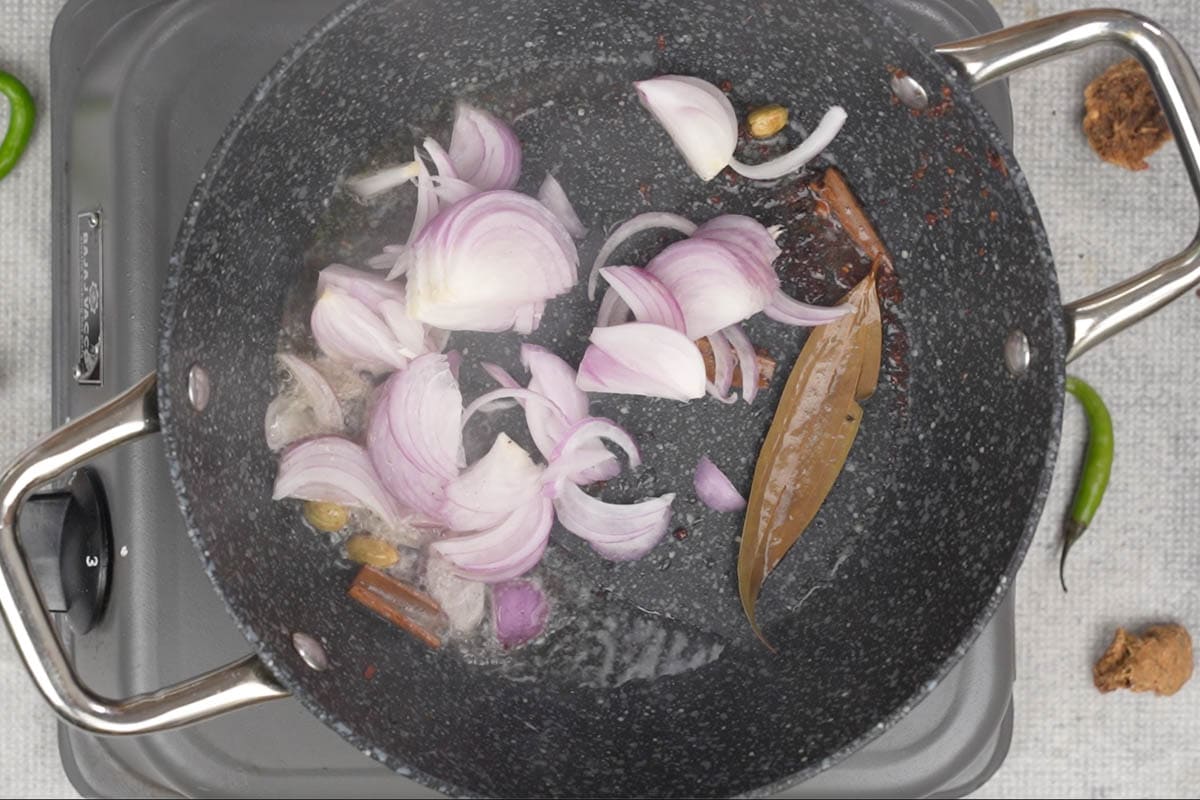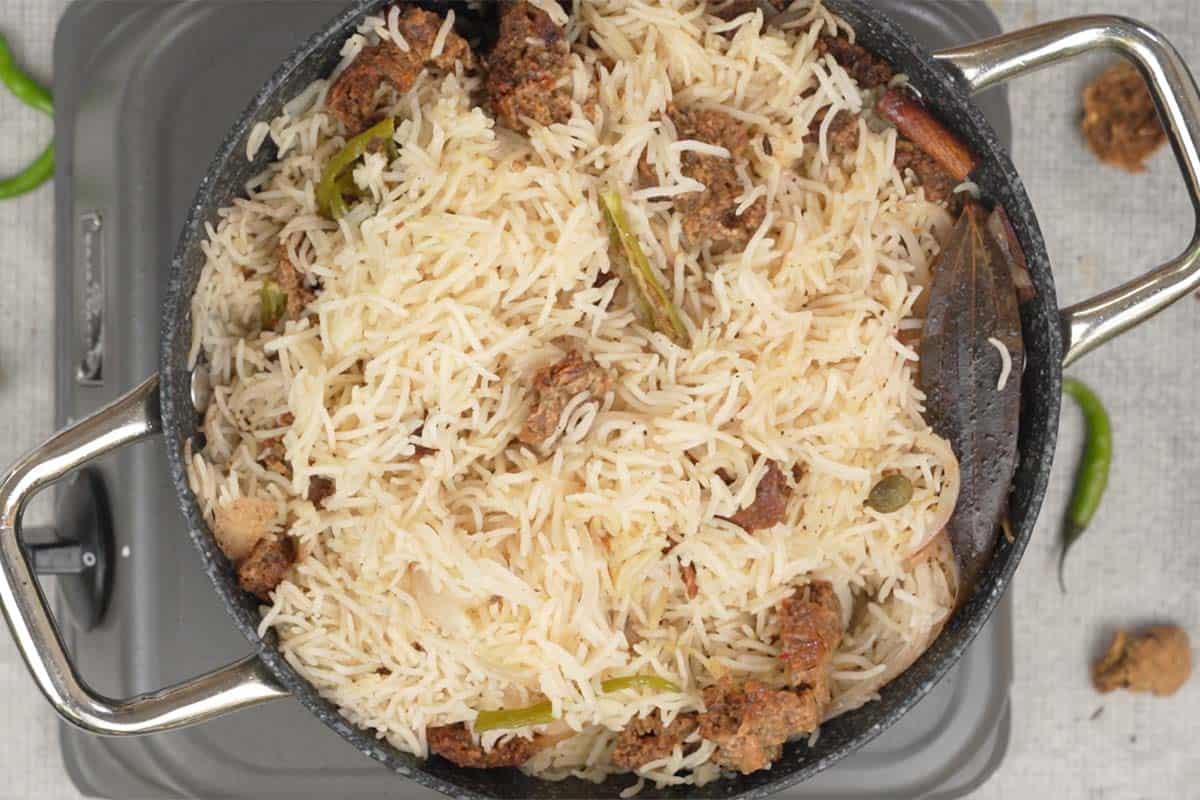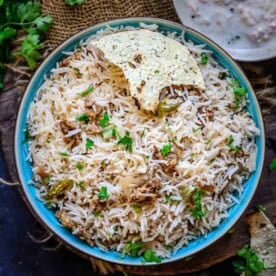Wadi Chawal (Punjabi Wadi Pulao)
on Jun 06, 2025
Wadi Chawal (Wadi Pulao) is a Punjabi-style pulao prepared with rice, urad dal wadi, and spices. It uses simple ingredients and comes together quickly. Here is how to make it.
Try a few more pulao recipes that are perfect for your weeknight dinner: Chicken Pulao, Veg Pulao, Gucchi Pulao, and Brown Rice Pulao.

My mom’s kitchen always has wadi and mungodi; she frequently uses these ingredients to make curries and pulaos. I learned this simple pulao recipe from her, and now I make it often, too.
About Wadi Chawal
Wadi Chawal (Wadi Pulao) is a delicious combination of rice, onions, spicy urad dal wadi, and spices. It is quite popular and is prepared very often in Punjabi households.
Wadiyan Wale Chawal are super easy to make and comes together in under 40 minutes.
This rice dish is best served with raita on the side or Punjabi curries such as Rajma Masala, Chole Masala, etc. Serve it for your weekday meals, pack it in a lunch box, or as a side dish with your festive or special meals.
What Is Punjabi Wadi?
Punjabi Wadi (Plural – Wadiyan) are mildly spiced, deliciously flavored sun-dried dumplings made from lentils.
The lentils are ground to a fine paste and mixed with spices. The paste is then shaped into small rounds and dried in the sun. Wadi has a taste and texture similar to meat or soya chunks, so if you want a replacement for meat or soya chunks, these are a good option.
Wadiyan can be made using various lentils, urad dal and moong dal being the most popular. Store them in airtight containers for up to a year in a cool and dry place.
Wadis are often fried slightly before adding to sabzi (stir fry), curry, or pulao recipes. This gives the dish extra flavor and texture.
Ingredients
Rice – Long-grain Basmati rice is my preferred choice for pulao recipes. However, you can use any readily available white rice.
Whole Spices – This wadi pulao is flavored with whole spices such as bay leaf, cinnamon, and green cardamom. You can add a few cloves and black cardamom for an added flavor.
Wadi – I have used spicy urad dal wadi (wadiyan), but you can use any variety of wadi that is easily available.
Others – Oil, ghee, onion, green chilies, salt, garam masala, and lime juice are a few other ingredients used in this wadi chawal recipe.
Avoid adding onions for a Jain version.
To make it vegan, replace ghee with oil.
How To Make Wadiyan Wale Chawal
Wash 2 cups of long grain basmati rice and soak them in enough water for 20 minutes.

Heat 2 tablespoon oil in a pan over medium heat.
Once the oil is hot, fry the wadi until they are browned. Drain and keep aside.

Add 1 tablespoon ghee to the same pan and heat over medium-high heat.
Once the ghee is hot, add 2 bay leaves, 1-inch piece of cinnamon, and 2-3 green cardamoms, and fry for 3-4 seconds.

Add ½ cup thinly sliced onions and cook until they turn golden brown.

Drain the rice and add it to the pan with the following ingredients.
- 2 green chilies, slit into half
- 1 teaspoon salt
- ½ teaspoon garam masala
- 2 teaspoon lime juice
- fried wadi
- 4 cups of water
Stir gently.

Reduce the heat to low.
Cover the pan with a lid and cook until all the liquid is absorbed and the rice is cooked (20-25 minutes).

Remove the pan from heat and let the rice rest for 5 minutes.
Fluff the rice with a fork. Serve hot.

Storage Suggestions
Wadi Chawal can be stored in an airtight container in the refrigerator for 3-4 days. Reheat in a pan or microwave until nicely hot before serving. If the rice looks dry, then splash a little water over them when reheating.
You Might Also Like

Wadi Chawal Recipe (Punjabi Wadi Pulao)
Ingredients
- 2 cups long grain Basmati rice
- 3-4 urad dal wadi (broken into 1-inch pieces)
- 2 tablespoons oil
- 1 tablespoon ghee
- 2 bay leaves
- 1 inch piece of cinnamon stick
- 2-3 green cardamoms
- ½ cup thinly sliced onions
- 2 green chilies (slit into halves)
- 1 teaspoon salt
- ½ teaspoon garam masala
- 2 teaspoons lime juice
Instructions
- Wash the rice and soak it in enough water for 20 minutes.
- Heat oil in a pan over medium heat.
- Once the oil is hot, fry the wadi until they are browned. Drain and keep aside.
- Add ghee to the same pan and heat over medium-high heat.
- Once the ghee is hot, add bay leaves, cinnamon, and cardamoms, and fry for 3-4 seconds.
- Add onions and cook until they turn golden brown.
- Drain the rice and add it to the pan with green chilies, salt, garam masala, lime juice, fried wadi, and 4 cups of water.
- Stir gently.
- Reduce the heat to low.
- Cover the pan with a lid and cook until all the liquid is absorbed and the rice is cooked (20-25 minutes).
- Remove the pan from heat and let the rice rest for 5 minutes.
- Fluff the rice with a fork. Serve hot.
Video
Nutrition























I tried it’s really yummy and spicy, with curd it really gives taste in this scorching heat
Thnx for trying 🙂